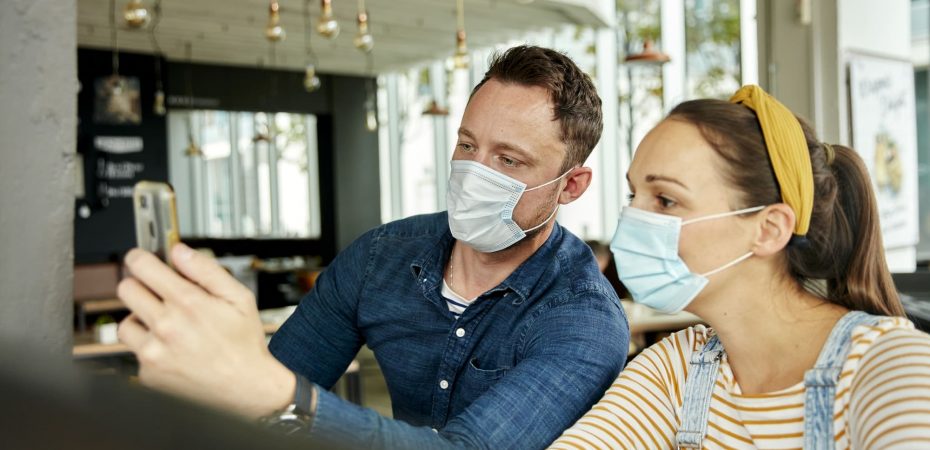Donor meetings are an essential component of major gift fundraising, providing invaluable opportunities to learn more about the individuals who make your programs possible. There are some fundamentals you should consider when preparing for these meetings – and new factors to keep in mind during the “new normal” of major gift fundraising in the time of COVID-19.
Remember the Fundamentals
Before considering how donor meetings have changed in light of a shifting health landscape, it is useful to refresh a few basic principles of effective engagement:
- Plan ahead! Heading into a donor meeting, you should never rely on “winging it”, no matter how confident you may feel.
- Planning includes logistics
- Scheduling your meeting well in advance with the donor, ideally at least three weeks, to respect their busy schedule and give yourself time to prepare.
- Reviewing directions to ensure that you leave ample time for travel, even if you have been there before.
- Setting a Plan B (or C or D…) for how you will get to where you need to go, in the event of construction or other unexpected inconveniences.
- Knowing your donor
- Reviewing their history with your organization, including gifts made, programs of interest, and so on.
- Assembling a team that reflects the donor’s interests that can gather before the meeting — providing you with critical updates and news on how their support has made an impact.
- Refreshing details you have about the donor that are not specifically related to your organization, so you can establish a more personal connection through your conversations.
- Knowing Your Objectives
- Asking yourself and others on the team, what are your long-term goals with this donor?
- Following up from a donor-centric perspective to ask, what do you know about your donor’s philanthropic goals and how these may align with their ideal journey with your organization?
- Reverse-mapping the necessary steps to help your donor reach those goals — and supporting that with a meeting agenda and talking points that will help you get to the next stage of that journey.
- Ask open-ended questions. You want your conversation to be engaging and meaningful, beyond simply getting your donor to the next stage of the relationship. By setting up a series of strategic, open-ended questions, you invite the donor to share more about the values and interests that drive their philanthropy.
- Spend the majority of your time listening. You are no doubt proud of your organization and program impact, and it can be tempting to fill your meeting with great stories, statistics, and more. But, you should take a breath and put your great open-ended questions front and center so that you can learn more about your donor during this valuable time you have together — and remember what you can save for follow up.
- Always set the stage for your next step. End your meeting with an agreed-upon follow up action to take the guesswork out of donor relationship development and build upon your meeting’s momentum. When planning your agenda, you can brainstorm possible follow-up steps that would engage the donor – such as a visit to a particular project site or a call with a program leader. You should also be flexible to add other types of follow-ups based upon the conversation and new avenues presented by the donor.
- Say thank you! The most important follow up is to thank your donor for their time. While you should thank them at the end of the conversation, you should also be ready to send a thank-you note immediately after the meeting. This can be a simple handwritten notecard, which is a nice personal touch. You should also call the donor within a week after the meeting to say thank you again. This can be a great time to check in on follow up steps!
Don’t Forget the Ask!
It might seem obvious, but if your meeting intent is securing a gift — don’t forget to ask! This is not to say that every donor meeting should have a monetary ask component. In the process of planning your meeting, review where you are at in your donor’s journey, and determine if this will be more focused on cultivation or stewardship, or if you are approaching an important request for funds.
If an ask is on the table, incorporate pre-meeting steps to set your donor up for the discussion. This could include sending a personalized impact report that reflects previous giving or a proposal for consideration around renewed support. You will also need to be clear on your internal ability to accept or need for funds — for example, do you have clearance from your management team to accept dedicated funds for a particular project of interest, or do you have a concrete budget and plan in place for how the donor’s support will be used.
A great approach to an ask conversation is to help the donor feel in charge of the moment — by securing their permission to pivot the conversation to a funding request. As you are discussing their impact and looking ahead to the future, consider a question like, “You have been such an incredible advocate for XYZ program — would you be interested in discussing how you could be more involved?” This really puts your donor in the driver’s seat, and it also shows deference and respect for their preferences.
Modifying Donor Meetings for a Virtual World
All of your planning fundamentals are at play for virtual meetings, with the exception of logistics planning to ensure you arrive on time. But, the new context of donor meetings includes important additional considerations:
- Test your setup. Just as you would pay attention to your dress and presentation for an in-person meeting, you must consider how to appear professional in your virtual setup. This includes dressing appropriately for the camera, but also how your video and audio is set up. Some tips to consider include:
- Locating your video feed with a suitable background that is warm but not distracting. If you can avoid a blank white wall, you can add more dimension to the image and create a more “in-person” feel.
- Lighting yourself consistently from the front. If you are backlit with a window or light source behind you, you risk becoming a black silhouette, which means your donor won’t be able to clearly see your face.
- Elevating your camera to eye level. You may be working from a laptop while home, but this can orient your gaze and head downward if you don’t have the computer elevated so that the camera is at eye level. This is also true for a webcam that is not embedded in your laptop. Placing your camera on a stand (or even a stack of books!) keeps your chin elevated and gives the sense that you are looking directly at the donor, just as you would for an in-person meeting.
- Trying out your microphone, and, if necessary, using headphones with a microphone attached. Testing out your audio ahead of time is essential to ensuring that your donor will be able to hear you clearly throughout. You should also avoid distracting noisemakers like air conditioning or a fan.
- Checking your internet connection and bandwidth while using both audio and video feeds. Streaming video and audio simultaneously can put too much pressure on your network. Because you are aiming to approximate an in-person experience, it is important to test your current setup. If you need a signal booster or to increase your internet capacity, it is better to know now — rather than midway through your donor meeting, after you have frozen or stuttered on screen!
- Practice, practice, practice! Delivery on video can feel different than in-person, and so it is important to do a few test-runs to feel comfortable in this medium. One advantage of most video chat services is the ability to record — so you can receive the feedback of your “sparring partner” but also review the video yourself for any self-critique.
- Plan for virtual updates to your non-verbal communication. One important thing to watch during practice sessions is how you adjust non-verbal communications cues. The actual percentage of communication that is classified as non-verbal varies by study but suffice to say that non-verbal cues — like posture, how your arms are positioned, eye contact, and more — are critical to how we communicate with one another. By nature of the video stream, non-verbal communication can be cut off or made more difficult to “read”. It is important to prioritize things like eye contact with your donor, smiling, lifting your eyebrows to create an engaging and open expression, and so on.
- Make the experience seamless for your donor. You want this to be easy for your donor, so think carefully about the video conferencing system that you will suggest using. Is it ubiquitous, like Zoom? Operating system-specific, like FaceTime? Or accessible through a single link without special downloads, like Google Meet? If your donor is older or not technologically savvy, you should be flexible and suggest alternative ways to connect — possibly even substituting a simple phone call if that is your donor’s preference.
Whether in person or virtually, it is important to remember: Your donor supports you, as well as other organizations, because they want to make an impact in their community. They may not have the skills or time to directly take part in programs as an implementer, and so they achieve that impact through you. In other words, you are the facilitator of your donor’s passions and dreams — which is a pretty incredible thing! Enter your conversation in that spirit and with an openness to making them a partner in your mission, and you are already setting yourself up for success.
If you want to discuss strategies for donor development in greater detail, our team is here to talk. We love being a sounding board for ideas, a key partner in developing critical research, strategies to support your fundraising, and more.
You can reach out to me directly at lindsay@faircomny.com — I’m ready to jump in!




